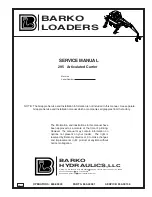
32
8. Command Control
USF-101MDX4/8-12G modules can accept commands over LAN. This section describes command
interface, format and communication details.
8-1. Communication Method
Communication Interface
Ethernet 100BASE-TX / 1000BASE-T RJ-45
Command Protocol Overview
1.
Setting commands
Commands sent from control systems: TCP/IP
Responses sent from USF-101MDX4/8-12G modules to control systems: TCP/IP
2.
Status report messages
Status report messages from USF-101MDX4/8-12G modules to control systems: UDP
Responses (to messages) sent from control systems to USF-101MDX4/8-12G modules: UDP
3.
Setting command format (sent from control systems to USF-101MDX4/8-12G modules)
Commands are written in 7-bit ASCII and ended with [CR][LF], and composed of four Index
elements separated by three delimiters (comma characters)
(See Sec. 8-2-1.
“Setting Commands.”
Port Number
60000 (for both TCP/IP and UDP/IP) (default)
Port number should be specified on the USF module Web GUI menu.
Connection Timeout (Keep-Alive Idle)
No response comes back within 10 seconds while connection is established, the connection port is
released.
To send commands, reconnect to the USF-101MDX4/8-12G module.
Command System IP Address (Status Report Destination)
Status reports are sent to two destination IP addresses (via UDP) from a USF-101MDX4/8-12G
module.
Destination IP addresses should be specified on the USF-101MDX4/8-12G module Web GUI
menu.
See Sec. 7-2.
“Network.”
8-2. Setting Commands
8-2-1. Setting Command Format
Setting command format is as shown below.
Command Format
<Command code>,<ID code>,<Item code>,<Value>[CR][LF]
As shown above, commands are composed of four Index elements separated by three
delimiters (comma characters).
Commands are written in
ASCII
and ended with [CR][LF].















































